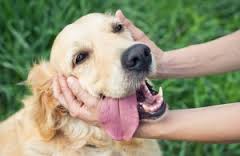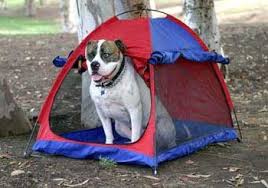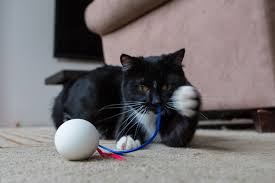Funny Vet Stories
Dr. Bo Brock, Crowded In the Middle of Nowhere
 Dr. Bo Brock has just about seen it all, despite living in the middle of nowhere. He's treated just about every animal, from Ostriches to Elephants. He'll tell us several hilarious stories about strange but true cases from his peculiar practice.
Dr. Bo Brock has just about seen it all, despite living in the middle of nowhere. He's treated just about every animal, from Ostriches to Elephants. He'll tell us several hilarious stories about strange but true cases from his peculiar practice.
He is one of the most highly recognized Veterinarians in the U.S., and even filmed a Television Pilot with Animal Planet. Despite living in the self-proclaimed "middle of nowhere" of rural west Texas, people come from thousands of miles away to have their animals treated with his expertise - even Toby Keith, who sent his prized racehorse to Dr. Brock's clinic! Dr. Brock says along with horses, he also deals with dogs and cats, cows and even ostriches, stating that ostrich farming was a really big deal at one time, before the market crashed.
Dr. Brock had been treating many colicky horses, when a vet called him late one Sunday night with another case. The horse wouldn't be arriving until around 2:00am, which Dr. Brock states is usual for veterinary life. When the driver arrived with the horse, he told Dr. Brock that this horse was "special." Dr. Brock didn't think anything of it, as everyone says their horse is special. He didn't pay much attention to what the guy was saying, that is, until he heard him say that the horse belonged to Toby Keith. After that, his thoughts started racing. What if the horse died? He could just hear it; Toby Keith and Willie Nelson would be singing a song about the dumb veterinarian from West Texas.
After treating the horse, when Dr. Brock got home the next morning, he told his three daughters about the "special" horse he treated that night. His oldest two daughters got really excited, as they were familiar with Toby Keith's music. However, his youngest daughter just looked at him and said, "Well, I knew that was going to happen." His other two daughters then said that there was no way their sister could have known that, to which she replied, "Yeah, you're not supposed to give beer to horses!" This was because she had heard Toby Keith's song, "Beer for My Horses," and just knew that someday that horse was going to go see her daddy, because she knew you were not supposed to give beer to horses.
 Another great story from Dr. Brock was when he visited a high-tech pig facility, which he prefaces by stating what would you do - would you put on someone else's underwear? He said he had never thought about it until this visit. Anyone entering this pig facility had to take off their clothes, shower and put on clean clothes provided by the pig facility. This meant putting on underwear that was not his. As Dr. Brock had no choice, he decided to go for the biggest pair of underwear he could find, which would mean less touching of his body, and then put on the coveralls that were provided. However, the underwear was so large; it didn't take long for them to fall down inside of the coveralls. He was then forced to take tiny steps because they were around his knees. He was trying to hold on to them with one hand by putting his hand in the pockets and grasping the underwear, but it wasn't long when there was a time he had to use both hands and lost them completely inside of the coveralls and had a hard time completing the tour with the underwear around his ankles.
Another great story from Dr. Brock was when he visited a high-tech pig facility, which he prefaces by stating what would you do - would you put on someone else's underwear? He said he had never thought about it until this visit. Anyone entering this pig facility had to take off their clothes, shower and put on clean clothes provided by the pig facility. This meant putting on underwear that was not his. As Dr. Brock had no choice, he decided to go for the biggest pair of underwear he could find, which would mean less touching of his body, and then put on the coveralls that were provided. However, the underwear was so large; it didn't take long for them to fall down inside of the coveralls. He was then forced to take tiny steps because they were around his knees. He was trying to hold on to them with one hand by putting his hand in the pockets and grasping the underwear, but it wasn't long when there was a time he had to use both hands and lost them completely inside of the coveralls and had a hard time completing the tour with the underwear around his ankles.
Just like humans, animals are often downright hilarious and can bring us so much joy! In his book, Crowded in the Middle of Nowhere: Tales of Humor and Healing from Rural America, Dr. Brock shares a collection of humorous and poignant stories from his life as a Vet, all while dispensing the wisdom he feels only animals can teach us about life.
Dr. Bo Brock was once voted Equine Practitioner of the Year for the state of Texas. He passed the boards and became a member of the American Board of Veterinary Practitioners in 2004.
Visit Website
What Happens To Your Pet If Something Happens To You?
AJ Fudge, A Life of Love
 You don't have to be Leona Helmsley to plan for your pet if you should die. Estate Attorney AJ Fudge is our guest. She says it's easy to plan for any eventuality, but you should know how. Simply putting your pet in your will isn't enough, as that may be contested.
You don't have to be Leona Helmsley to plan for your pet if you should die. Estate Attorney AJ Fudge is our guest. She says it's easy to plan for any eventuality, but you should know how. Simply putting your pet in your will isn't enough, as that may be contested.
As animal lovers and owners, our plan is to give each of our animals a warm, loving home for their entire life. However, this plan is most likely based on a very large assumption: that you will outlive your animal.
While we can all certainly hope that we will outlive our animals, unfortunately none of us know what the future holds. Something can happen to any of us at any time. If you have an animal, this means you need a plan in place just in case it does. Without one, your animal is not protected and its future may be in serious jeopardy.
Many of us tell ourselves that surely a friend or relative will step up to do the right thing and take over the responsibilities of caring for your animals. But, relying on the kindness of friends and family is not nearly enough. You need a comprehensive, legally enforceable plan in place if you truly want to protect your animal. There is no substitute.
All too often animals are surrendered to shelters and euthanized, because something has happened to the animal's owner. This is a heartbreaking thought for any animal owner. The good news is that planning for your animal is easy to do and having a plan in place guarantees that this will never happen to your animal.
AJ Fudge has covered everything you need to know in her book, "A Life of Love: Mandatory Reading for Animal Owners." She states this book was written as a call-to-action to encourage animal owners everywhere to put a plan in place to protect their animals. The book takes a clear, straightforward approach to give you the information you need to guarantee that your animal is protected. The goal is to keep all of our beloved animals out of shelters and in loving homes.
 The reason for the book is that AJ was tired of seeing all of the animals that were listed on Humane Society websites or the local animal websites where something had happened to an animal's owner and that the animal was now looking for a new home.
The reason for the book is that AJ was tired of seeing all of the animals that were listed on Humane Society websites or the local animal websites where something had happened to an animal's owner and that the animal was now looking for a new home.
AJ states that you should also not rely on a Will to protect your animals. There are a lot of rules when it comes to Wills, with the main problem being that you can't put any conditions on the property that you transfer.
So how much money should you leave for your animal? That depends on what kind of animal you have, what kind of care you want them to receive and their age. If you have a dog or a cat, you have a pretty good idea of how long they will live and what their basic care and needs are. On average, $10,000 is a good amount to set aside for each pet. You can of course leave more or less, depending upon your situation.
So when should you start preparing for the care of your pet if something should happen to you? AJ states that once you are over the age of 18 and own a pet, you should have a plan in place if something should happen to you.
AJ is an Estate Planning attorney and knew that there was a very easy solution to the problem that she felt most animal owners weren't even aware of. Her goal is to educate animal owners and more importantly motivate them.
Visit Website
The Weekly "Once-Over" - Part I
Doc Halligan, Lucy Pet Foundation
 Doc Halligan will teach us how to give your pet a weekly check up. Knowing exactly what to look for could mean the difference between life and death. Early detection gives you the best odds when it comes to your pet's health.
Doc Halligan will teach us how to give your pet a weekly check up. Knowing exactly what to look for could mean the difference between life and death. Early detection gives you the best odds when it comes to your pet's health.
Every week you should check your pet thoroughly from the top of their head to the tips of their tail. You know your pet better than anyone and if you can pick up on problems early, you may even save your animal's life.
When performing your weekly at-home exam, you want to do it in a good light and take a systematic approach and do it the same way every time so you don't miss anything. Be sure to sneak in lots of hugs and kisses so your pet learns to enjoy it; you might even find a special petting spot during the once-over.
Face
It's been said that the eyes are the windows to the soul. This is true for animals as well-you can tell a lot about their health by looking at their eyes. You're probably already looking into your pet's eyes lovingly, but you also want to look for signs of illness or injury. Dogs and cats get many of the same diseases that we do, including cataracts, glaucoma, conjunctivitis and dry eye, but if caught in the early stages, many of these conditions can be prevented from progressing and your pet's eyesight could even be saved. Cats and dogs can even develop tumors in the eyes, so look closely with a good light. Both pupils should be the same size and the eyes should be clear, bright and shiny, not cloudy.
The whites of the eyes, or sclera, should be white, not red. Dogs and cats have what's called a "third eyelid," which helps protect the eye as well as lubricate it by producing tears. The third eyelid should not be showing. When a cat or dog is sick or in pain, you will suddenly see this white-colored membrane covering the lower part of the eye. You should not see redness, discharge, or squinting, as these can all be signs of infection, foreign objects in the eye or pain.
Check to see if there is an increase or a decrease in tear production by noticing how moist your pet's eyes look and how often they tear up. Certain breeds of dogs such as the Cocker Spaniel, Shih Tzu, Lhasa Apso, Pekinese, Miniature Schnauzer and Bulldogs are predisposed to developing a very common condition known as dry eye, where tear production is greatly reduced, leading to red, itchy and painful eyes.
 The eyes should not appear sunken or excessively protruding and your pet should not be rubbing or pawing at its eyes. If your cat or dog has a small amount of normal discharge in the corner of its eyes, go ahead and gently wipe this out with a soft tissue. The discharge should be a light grey but not colored. You can also use eye wash solution, which is a saline solution available over the counter at drug or pet stores, to remove this.
The eyes should not appear sunken or excessively protruding and your pet should not be rubbing or pawing at its eyes. If your cat or dog has a small amount of normal discharge in the corner of its eyes, go ahead and gently wipe this out with a soft tissue. The discharge should be a light grey but not colored. You can also use eye wash solution, which is a saline solution available over the counter at drug or pet stores, to remove this.
Lips
Some dogs that have lip folds, such as Spaniels, are especially prone to inflammation and skin infections on their lips. Lip tumors can develop on both dogs and cats. Check your pet's lips to make sure there are no crusts and there is no scaling and that the skin isn't dry and cracked like your lips when they are dry. Be sure to look for redness and hair loss around the mouth as well.
Nose
It's a common fallacy that a warm nose means a dog or cat has a fever. Humidity, body temperature and flow of tears through the ducts into the nose all help determine whether your pet's nose is dry, moist, warm or cold. There are no sweat glands in the nose and the mucus lining causes the moisture. During sleep and in certain climates, a dog or cat's nose may become warm and dry, but this doesn't mean it has a fever. However, the nose should be smooth and without any scaling or roughness. Sneezing or nasal discharge can be signs of an upper respiratory infection, quite common in cats. Also look for color changes on your pet's nose. There should be no loss of pigmentation on a dark nose. White noses can get sunburn and even skin cancer.
Mouth
Notice if your pet has any trouble opening and closing its mouth. Look for any drooling or difficulty chewing and swallowing. Hopefully you're brushing your pet's teeth daily or at least three times a week. Check your dog or cat's mouth for tumors, swelling, bleeding gums, tartar and foreign objects like string (cats) and sticks (dogs). Look at the teeth. Are they white, brown, or green? There should be no broken teeth and no odor.
 Look at the color of the gums. They should be nice and pink, not white or red. You can check your pet's circulation by using your thumb and briefly applying pressure to the gums and releasing. The area that you pressed should turn white and then rapidly return to the normal pink color. This is called the capillary refill time. For dogs and cats, one to two seconds is considered normal. If the refill time is less than one second or more than three seconds, it could indicate a serious circulation problem and necessitates an immediate trip to the vet.
Look at the color of the gums. They should be nice and pink, not white or red. You can check your pet's circulation by using your thumb and briefly applying pressure to the gums and releasing. The area that you pressed should turn white and then rapidly return to the normal pink color. This is called the capillary refill time. For dogs and cats, one to two seconds is considered normal. If the refill time is less than one second or more than three seconds, it could indicate a serious circulation problem and necessitates an immediate trip to the vet.
Next week we will move further down their bodies with more tips on the things you should look out for.
The Mission of The Lucy Pet Foundation is to reduce pet overpopulation by having mobile spay/neuter clinics across the country and to support causes that benefit animal welfare. The Lucy Pet Foundation not only offers free and reduced spays and neuters, they also do microchipping, vaccines and de-wormings. Spaying and neutering is not only great for pet population control, but it has been proven that an animal will live on an average of 40-percent longer after having this surgery.
Visit Website
How to NOT Train a Dog - Dr. Debbie
 The other day I was walking my dog in a community area and encountered a lady with two Shih Tzus. As we approached, her dogs rallied with barking and tugging on their leashes. I asked if her dogs were friendly, so as to decide if we could approach. The lady scowled, embraced her still barking dogs and grumbled, "Do they look like they're friendly?"
The other day I was walking my dog in a community area and encountered a lady with two Shih Tzus. As we approached, her dogs rallied with barking and tugging on their leashes. I asked if her dogs were friendly, so as to decide if we could approach. The lady scowled, embraced her still barking dogs and grumbled, "Do they look like they're friendly?"
Realizing this dog owner was more unsociable than her dogs, I decided to vamoose, but not before I envisioned this blog topic - how pet owners mold unsocial dog behavior.
Unwanted doggie behavior such as lunging and barking on the leash become established when the dog owner hasn't made it clear what the appropriate behavior is, fails to correct and redirect to a more suitable behavior, or simply reinforces the undesirable behavior through actions or words. Face it - there aren't bad dogs, just poorly trained ones.
Avoid making these top 5 training mistakes:
1. Secluding Your Dog in the Backyard
Keeping your dog in lock down almost guarantees problem behaviors will develop such as biting, inter-dog aggression and phobias to anything from noises to car travel. Isolated dogs lack the experience and confidence when faced with novel situations while socialized dogs adapt easily.
I see it all the time - the dog owner prides herself in keeping her dog safe. "I didn't want Fido to catch any diseases as a pup, so I didn't let him out of our backyard till he was a year old." The overwhelming fear of infectious diseases like parvovirus causes some well-meaning owners to confine their new dog or puppy to the limits of house and yard. Even more extreme is never allowing a puppy to step foot outside until after their last puppy vaccinations! Puppies are most adaptable to new experiences between 6 and 16 weeks - this is the time to expose them to unfamiliar places, people and animals.
That doesn't mean you should take your eight week old puppy to dog parks, but rather to use good sense selecting low dog traffic areas and visiting with family and friends outside of the home that have properly vaccinated pets.
2. Skipping Obedience Training
Going to school is a must for any new dog to a home, whether a puppy or adult. No two dogs are the same, and each learns differently. Formal obedience training is a useful tool to gently reaffirm who's in charge and sets the rules in the house. Statistics show that dogs that go through formal obedience training are less apt to develop behavior problems and be relinquished to shelters.
 3. Reinforcing Fear at the Veterinary Office
3. Reinforcing Fear at the Veterinary Office
In the exam room I cringe when I see a dog owner comforting a nervous, fearful or aggressive pet. That "good boy" and pat on the head reinforces your dog's behavior, making it more likely that on the next hospital visits he'll behave the same, or worse. Some problem behaviors escalate making it difficult for the veterinary staff to examine or treat the animal. This may mean additional costs for sedation or anesthesia for routine medical needs.
It's natural for a pet owner to want to reassure a pet when he is frightened and it can be difficult to hold back the urge to soothe him. However, the best strategy is to ignore those fearful behaviors in the vet office. Don't be tempted to kiss, snuggle or hold Fido on your lap when he is misbehaving. Rather, place the dog on the floor, refocus your dog's attention to you, and cue him to "sit" or "lie down."
4. Not Using Food as a Reward
Food shouldn't just be for the taking. Don't leave food out for your dog to graze whenever he wants and don't give treats just for the sake of giving a treat. Present food and treats as a reward for good behavior such as sitting quietly, going to a pillow, or performing a trick or obedience work. This places you at the top of the household hierarchy. You become the provider of great edibles in the house, and your dog will be motivated to listen to your requests in other situations.
We all love to spoil our dogs and give treats at times. But be sure to give treats for a reason, or you will have a spoiled doggie brat on your hands.
5. Not Exercising Your Pet Enough
Inadequate exercise can result in obesity and boredom, and may lead to problem behaviors like separation anxiety, destructive chewing and excessive barking. Dogs should get 30 to 60 minutes of sustained physical activity each day for optimum mental and physical benefit. And no - letting Buffy run around the backyard during the day is not adequate exercise.
Not all breeds are cut out for all exercise - a Labrador may enjoy retrieving games or swimming, a Jack Russell terrier may thrive with jogging or Frisbee, while a Basset hound will be satisfied with a leash walk.
Your dog can't be a well-adjusted, socialized canine citizen without you, as the pet owner, taking an active role in training. Put the time in, and you'll be thanked many times over with an outgoing, friendly canine pal that can accompany you on life's adventures.
Featured veterinarian known as "Dr. Debbie" on national pet radio program, Animal Radio. Ebook author of "Yorkshire Terriers: How to Be Your Dog's Best Friend"; "Pugs: How to Be Your Dog's Best Friend"; "Mini Schnauzers: How to Be Your Dog's Best Friend"; and "Shih Tzu: How to Be Your Dog's Best Friend." Dr. Debbie's books.
Visit Website
5 Summer Family Outings That Can Include Dogs
Robert Semrow, Animal Radio Listomania
 Summer is a wonderful time of year and for many it's a great opportunity for the family to be together and make life-long memories. It should go without saying that it's also a great time to take your dog with you for some of these activities.
Summer is a wonderful time of year and for many it's a great opportunity for the family to be together and make life-long memories. It should go without saying that it's also a great time to take your dog with you for some of these activities.
Let's start with family outings to local, regional and some state parks. Taking your dog with you is like giving them a giant birthday party that keeps on going for an entire day. The new smells, sights and activities are just what the dog ordered. Make sure you check the parks regulations on their dog allowances and adhere to the rules for the safety of your pet and others in the park. Additionally, know what activities you are likely to partake in so that you can decide ahead of time if your pup will be doing those things with you and if so, make sure you have whatever your dog will need for those activities as well. A day in the park is certainly something your dog will be up for and find continuous joy in.
Number two is hiking local trails. If you have an active dog that enjoys getting out and exploring with you, this is a great time of year to do this. Make sure you bring water for your dog and also take note of the cement and ground temperatures to make sure that your dog is not burning his or her paws. Additionally, make sure that when you finish the hike you clean their paws and do a snout to tail check up for any critter hitchhikers like ticks.
 Let's move on to water fun. Whether it's boating, surfing or swimming many dogs love the water as much as humans do if not more. If your dog displays a love of water and is safely enjoying it, you'll have a real treat in store when you take them with you for your water adventures. If they are on a boat, surfboard or even paddle-board, have the proper safety gear for them. Life jackets are a must as even the strongest swimmers can get tired and will appreciate that extra layer of safety. Some states have "Dog Beaches" specifically designated for the enjoyment of the ocean by humans and their dogs. It's such an inspiring thing to see - dogs of all sizes, shapes and breeds enjoying the beach much like little kids do.
Let's move on to water fun. Whether it's boating, surfing or swimming many dogs love the water as much as humans do if not more. If your dog displays a love of water and is safely enjoying it, you'll have a real treat in store when you take them with you for your water adventures. If they are on a boat, surfboard or even paddle-board, have the proper safety gear for them. Life jackets are a must as even the strongest swimmers can get tired and will appreciate that extra layer of safety. Some states have "Dog Beaches" specifically designated for the enjoyment of the ocean by humans and their dogs. It's such an inspiring thing to see - dogs of all sizes, shapes and breeds enjoying the beach much like little kids do.
Camping is another popular summer activity that dogs seem to love. The smell of nature, sleeping in a tent and reconnecting with nature in a way that their ancestors would be proud of. Plan for and bring a similar amount of supplies for your pet as you would yourself or others. Try to avoid changing their daily habits to much as it can cause upset stomachs, lethargy and even anxiety. Being in nature will be change enough.
 Finally, If roughing it means something a bit more upscale for your pooch…remember that more and more resorts are catering to families who want to bring their pets. They offer special activities, services and more. This year consider taking your dog with you on your vacation.
Finally, If roughing it means something a bit more upscale for your pooch…remember that more and more resorts are catering to families who want to bring their pets. They offer special activities, services and more. This year consider taking your dog with you on your vacation.
Summer vacation plans and excursions can include the entire family. It takes some planning and care, but it's certain to add more joy and memories to your activities.
Share your favorite summertime dog activities and more on our Animal Radio Facebook Page.
http://petworldinsider.com
Animal Radio News - Lori Brooks
 Cat Owners' Personalities Protect Their Hearts
Cat Owners' Personalities Protect Their Hearts
We know that pets can make you healthier and there is a study on that subject that is good news for about half the population. Research says American women over age 50, who are generally healthy, are less likely to die of cardiovascular problems like stroke, if they had a cat or dog. According to the National Death Index, as of 2006, eleven of every 1,000 non-pet owners had died of cardiovascular disease, compared to about 7 of every 1,000 people who had a pet. Now specifically for stroke, male pet owners were just as likely to have died, but female pet owners were about 40-percent less likely to have died of stroke, from the research they studied. Believe it or not, it's mostly because of cats not dogs. According to these experts, cat owners may have a personality that actually protects their hearts, rather than cats having a concrete effect on heart health.
 Terminator of Cat Toys
Terminator of Cat Toys
Previously, Digital Spy came out with a list of the best techno toys and gadgets for pets. One of the items on the list was Shru. Based on the theory that cats love killing things but no one wants a hallway full of dead birds or an arm that looks like you've had a fight with Edward Scissorhands, Shru might just be the solution. It acts like a rodent and it responds to a cat's actions by mimicking a shrew's erratic movement and sound. It can move along a hard surface floor or carpet. It shakes and makes sounds and even senses obstacles so it can avoid them. Best of all, when your cat attacks, it acts like it's panicking and tries to escape while squealing, but no matter how vicious your cat is it'll never die. Digital Spy calls Shru the Terminator of cat toys!
Most Pet Friendly Companies
Many companies offer perks to their employees to keep their workers happy and boost their productivity, perks like gym memberships, foosball tables, free snacks and stuff like that. But if you are an animal lover who yearns to work in a pet-friendly office, Fortune Magazine came out with a list of the most pet-friendly companies to work for. On the list, one of our favorites that we partner with every year for a pet-photo-contest is Kimpton Hotels, where employees are encouraged to bring their pets to work and are offered pet insurance and time off for the loss of a pet. GoDaddy was cited for having on-site psychologists for its employees, many of who have canine assistants who make sure everyone at the office stays happy and calm. No surprise the Fortune honored Google, a company whose love for dogs is written into the company's code of conduct. Frequent doggie visitors have their own badges and can enjoy a visit to Google's dog-themed cafe. Atlantic Health, a hospital chain, also made the list, as did Mars, the pet food company, as well as Genentech. Then there's Salesforce, a San Francisco-based company that takes pet appreciation to a new level. Not only does the software company allow animals in the office, it also has a special office made just pets. Employees can sign up to work in the dog-centric space which features soundproof walls, water bowls, crates and dog beds. Sales-force workers also get discounts on pet insurance, pet day care and dog walking.
 Coat For Dogs Summons Help When Dog is Lost
Coat For Dogs Summons Help When Dog is Lost
This might be have been perfect for the MTV show Pimp my Pooch. If you were looking to give your pet a fashion makeover, the DiscoDog was the coat for your dog. With its colored, flashing LED lights, you could spell out a word by inputting text and have it scroll along the coat like a digital billboard. Not only was it fun, but also it made your dog visible in the dark. And should you get separated, "Lost Dog" scrolled across the coat as soon as the Bluetooth connection to your phone dropped, meaning bystanders could help. But did it ever take off?
Overweight Cat Snuck Food From Fish Tank
An overweight cat in the UK named Puff was one of the 12 finalists in a weight loss competition for pets that aimed to encourage animal health. Puff's owner says she entered her nearly 17-pound cat in the competition in hopes of helping her overcome the damage done by Puff's previous owners. Apparently, it was a stressful household and the cat became an obese emotional eater. Puff was so large; she was too big for a cat carrier so her family had to use a dog crate to bring her home. Dieting had been hard on Puff whose Mom says her big girl was still very determined in trying to sneak extra food and that she even caught Puff eating the fish food from the fish tank before. Puff was competing with four other cats, six dogs and a rabbit in the six-month diet and exercise program.
Electronic Games For Dogs
Seriously, there's an electronic games console just for dogs. It's not exactly an Xbox One, but the CleverPet interactive treat dispenser does get your dog playing. Three paw-sized buttons light up in different ways, creating puzzles for your dog to solve. Every time they complete one, they get a treat. The cool part is that the puzzles get harder, keeping your dog engaged and stopping them from getting too fat.
 Listen to the entire Podcast of this show (#1180)
Listen to the entire Podcast of this show (#1180)





